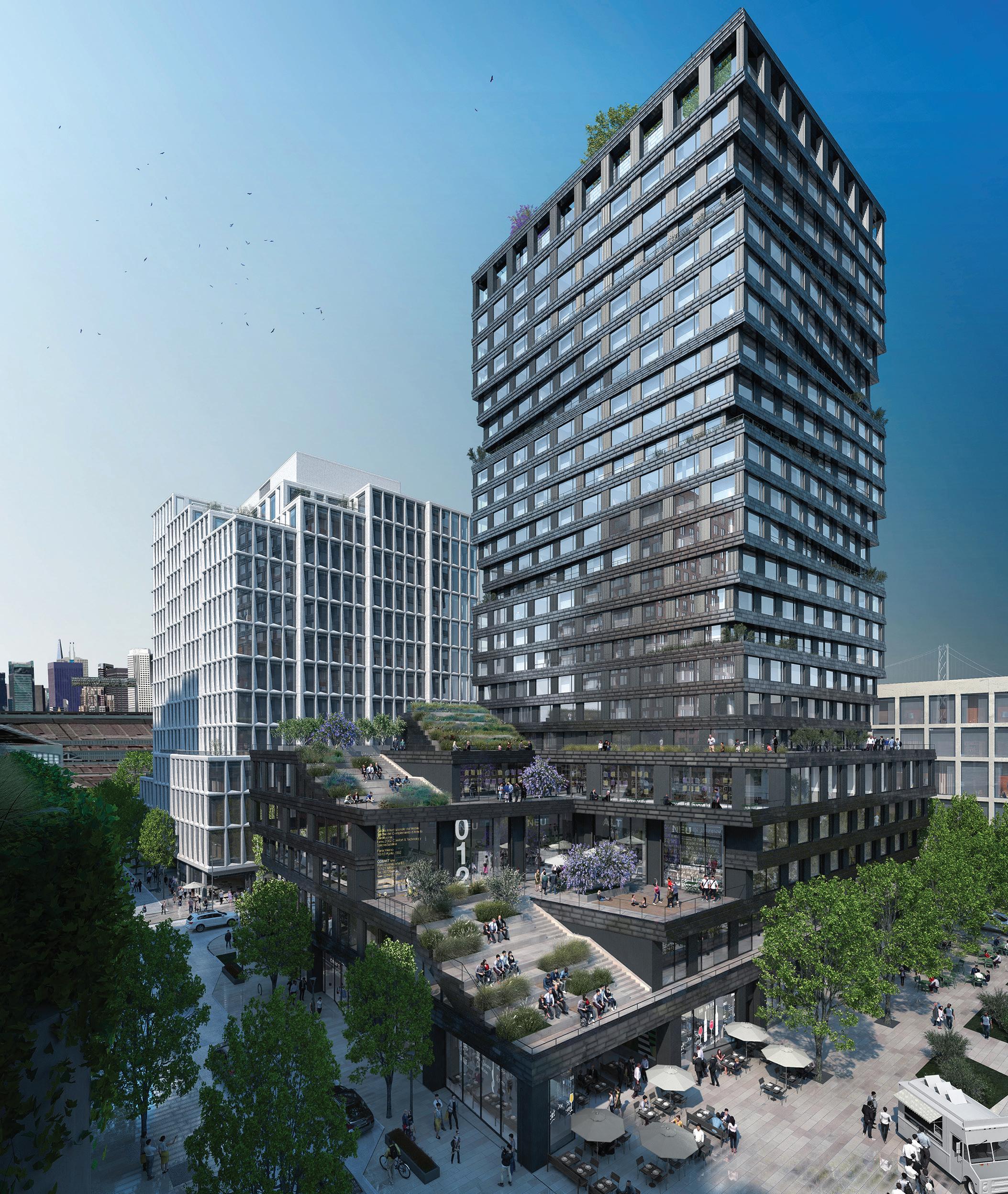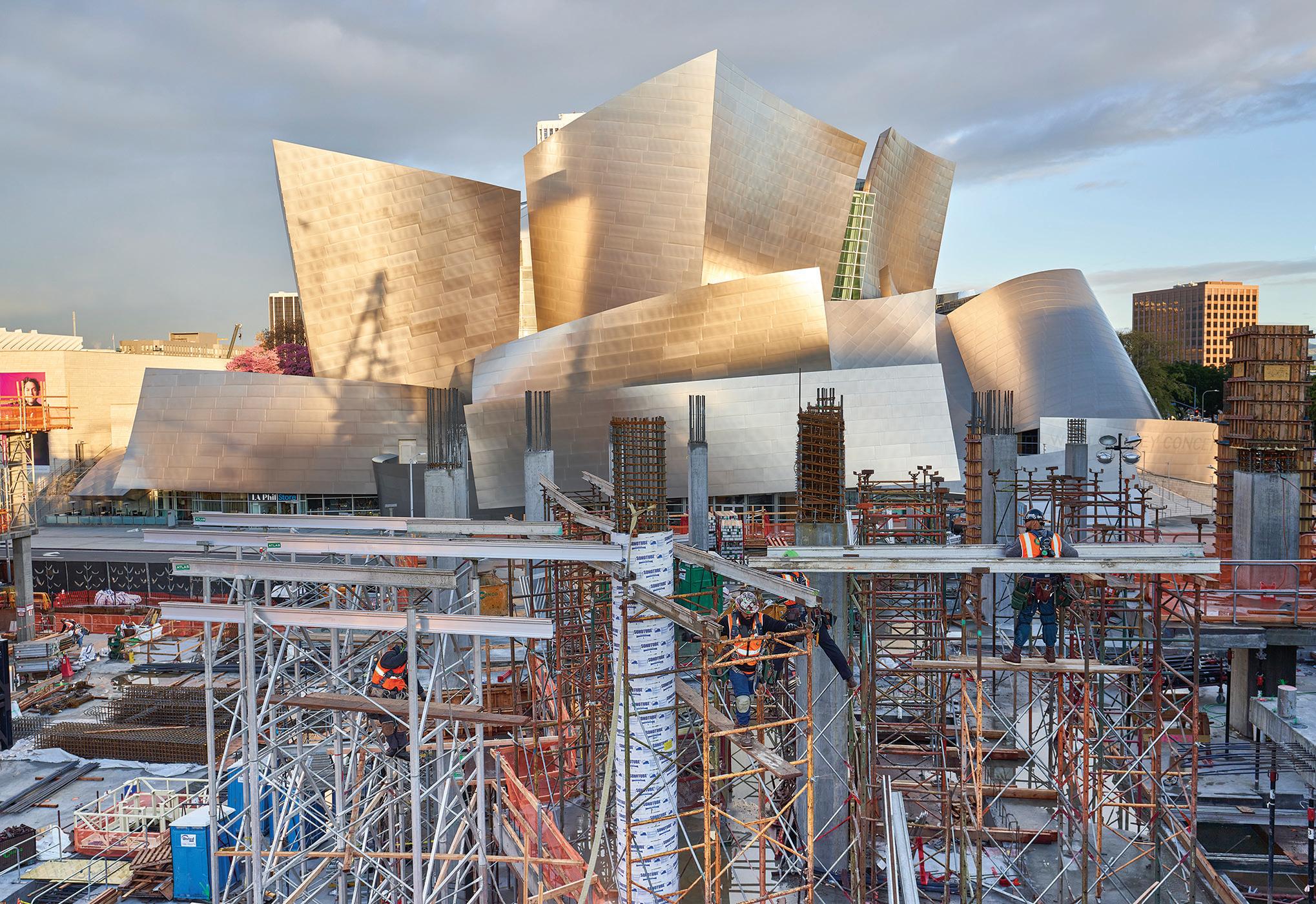
6 minute read
Leveraging Tech Empowers Seniors
California Buildings • Q1 2022
Leveraging Technology to Empower Elders in Senior Housing Communities
By Tammy Ng
Undoubtedly, the COVID-19 pandemic has presented numerous challenges for senior living communities, but has signaled the widespread adoption of technology to assist with resident communication and engagement. During the initial phases of the pandemic, the use of technology to promote the health of residents in senior housing was at the forefront. While this is still heavily prevalent amongst architects and developers, senior living providers are now leveraging technology to empower its residents.
Contrary to the belief that technology is counterintuitive to providing resident-centered care, an increasingly high-tech senior living environment encourages residents to regain a sense of control of their lives. A technology-forward senior living design concept can ultimately lead to an increase in the following ways. Connectivity
Social isolation has been one of the conditions seniors face as they age, which studies have shown have led to a significant decrease in their overall health. This lack of social and community interaction has only intensified with the Shelter-In-Place orders enforced during the pandemic. Technology is allowing seniors to maintain a connection with their community. Working in tandem with the increased accessibility to tablets and computers, largely due to their video calling capabilities, allows seniors to stay connected with friends and family, particularly, amidst visiting restrictions imposed by COVID-19 restrictions. This has impacted interior design, where there is a focus on providing meeting spaces and semi-enclosed booths in common areas for guests to make these virtual calls. Furniture has been selected to create a sense of privacy and it also includes the capability of charging the electronic devices. Autonomy
Seniors today are becoming more technology-savvy. In this new pandemic era, seniors are learning to use new technology to interface with everyday errands, whether it is using a tablet to hold a telehealth appointment with the doctor or a smartphone to request groceries to be home-delivered.
Further, part of what seniors are seeking in assisted living facilities or senior housing communities is a program of activities to help structure their days. Announcing the program schedule to residents has become widely accessible through the integration of app-based services and smart flat screens located in lobby areas. Now, guests can gather all

California Buildings • Q1 2022


California’s CRE Renaissance
Shaking Off COVID’s Effects, Developers Surge Toward Bright Future
Like Mark Twain (who loved the Golden State) once said about himself, the rumors of California’s demise are greatly exaggerated. In fact, even during the pandemic, developers and urban planners have been busy designing an even more spectacular future, often transforming under-utilized tracts of land.
In the Bay Area, for instance, fascinating multi-use developments are moving from the drawing board toward reality along the waterfronts. And in once forsaken regions of downtown Los Angeles, planners are reimagining glittering new projects equal to the image of Tinseltown. Throughout California’s heartland numerous localities are accommodating the flow of people from densely populated vertical cities to more spacious neighborhoods where people can work more easily from home and visit outlying offices and shared workspaces.
SF’s Mission Rock
Mission Rock is a mixed-use project designed to realize a shared dream of a new waterfront neighborhood developed by the San Francisco Giants, real estate company Tishman Speyer and the Port of San Francisco. It will be an inclusive community that combines an imaginative, eclectic array of shops, cafes and festivals; a launchpad for local producers, makers and creators; and innovative workplaces, affordable and market-rate homes, and social amenities. Plans include 2.7 million square feet of office, residential facilities (including 40% affordable housing) and retail, with eight acres of open space.
SF’s Treasure Island
Treasure Island sits in the heart of San Francisco Bay with the new Bay Bridge
Top left: The Mission Rock mixed-use development will feature office and residential towers. Image credit: Studio Gang. Lower left; Marketplace with shops and cafés. Image credit: Steelblue.
serving as a dramatic backdrop—an extraordinary location that will soon be home to one of the most transitoriented sustainable developments in the country. Rising on the site of this former naval station will be a new San Francisco community comprised of two distinct and vibrant neighborhoods with up to 8,000 homes (single family townhomes to mid-rise and high-rise towers, including 25% designated as affordable housing), three hotels, mixed-use space for retail and commercial ventures and vast stretches of public parks and open spaces laced with walking and bike trails. Plans for a new ferry quay and terminal will provide direct access to and from San Francisco. While much of the island is a blank canvas, several buildings are listed in the National Registry of Historic Places and will be rejuvenated with great care. It will include: w Residential: 8,000 units w Retail: 235,000 square feet w Office: 100,000 square feet w Hotel: 500 rooms w Historic Adaptive Re-Use: 350,000 square feet w Structured Parking: 450,000 square feet w Public Parks and Open Space: 300+ acres
Treasure Island is a man-made landform built in 1936-37 to host the 1939 Golden Gate Exposition. It became a U.S. Naval Station in 1942. Throughout World War II it housed helicopters, sea planes and airships in its hangars, and served as a processing center for 12,000 men a day deployed to the Pacific arena. The U.S. Department of Defense closed the base as part of its downsizing efforts in the 1990s. Since then it has served as a spectacular setting for filmmakers and festival-goers. In 2011 the San Francisco Board of Supervisors approved the 20-year development of the site.
California Buildings • Q1 2022
LA’s Bunker Hill
There is no place quite like Bunker Hill in Downtown LA (DTLA). Like most neighborhoods, Bunker Hill has a rich, complex, and multi-faceted history. Since the 1800s, the area evolved through many different eras, each reflective of its own unique times: from Victorian mansions
to working-class boarding houses, through decades of urban redevelopment to the Bunker Hill we know now. Today it is home not only to sweeping Class A office towers and public plazas but also celebrated museums, galleries, and performing arts institutions in a renowned arts and culture corridor that showcases the pulse of DTLA. And, like so much of today’s Downtown, Bunker Hill has a growing residential community as well.
This expansion and revitalization will feature some of the most anticipated developments in Downtown history—projects that will provide a broad range of housing, hospitality, and amenities, along with increased accessibility, connectivity, and a sense of community to residents, workers, and visitors alike. With its world-class collection of cultural institutions and skyscrapers complemented by new residential, hotel, retail, and public spaces, Bunker Hill is transforming itself into an urban center on par with the great cities of the world.
Projects include:
The Grand: Designed by worldrenowned architect Frank Gehry, The Grand is the crowning Bunker Hill development that most vividly reflects the present and future aspirations of both DTLA and Greater Los Angeles in its connection to culture, community and commerce.
This transformative development by The Related Company is a mixeduse project at the core of DTLA's landmark cultural scene that brings new residential, retail, and hospitality to Bunker Hill.

Designed by Frank Gehry, the Grand in the Bunker Hill area of LA is under construction. Image courtesy of The Grand LA.
(Continued on page 26)




